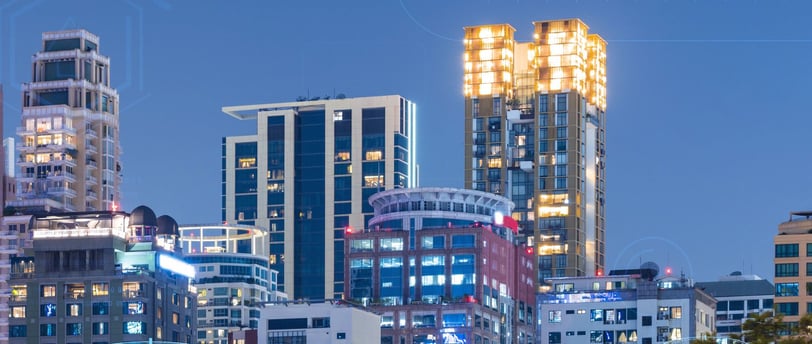Smart Cities: The Role of Technology in Building More Efficient Urban Spaces
TECHNOLOGY


In an era defined by rapid urbanization and technological advancements, the concept of "smart cities" is gaining momentum. Smart cities leverage cutting-edge technologies to enhance urban life, optimize resource use, and address challenges such as population growth, traffic congestion, and climate change. This article explores how technology is revolutionizing urban spaces and shaping the cities of tomorrow.
1. What Defines a Smart City?
A smart city integrates information and communication technology (ICT) with the Internet of Things (IoT) to manage infrastructure and services efficiently. By analyzing real-time data from sensors, devices, and systems, smart cities aim to improve the quality of life for residents while promoting sustainability.
Key pillars of smart cities include:
Connected Infrastructure: Seamless communication between systems, such as transportation, utilities, and public services.
Data-Driven Decision-Making: Using analytics to optimize city planning and operations.
Citizen-Centric Design: Enhancing public services and engagement through digital platforms.
2. Technology Transforming Urban Living
a. Smart Transportation
Transportation systems in smart cities prioritize efficiency and sustainability.
Real-Time Traffic Management: IoT sensors and AI algorithms monitor traffic flow, reduce congestion, and suggest alternate routes. Cities like Los Angeles use adaptive traffic signals that adjust in response to real-time conditions.
Public Transit Innovations: Mobile apps for real-time bus and train updates improve commuter experiences. In Barcelona, integrated transit platforms allow users to plan multi-modal journeys seamlessly.
Autonomous Vehicles (AVs): Self-driving cars and buses are emerging as solutions to reduce accidents and traffic congestion. Smart cities like Singapore are piloting AVs in select zones.
b. Smart Energy Grids
Energy efficiency is a cornerstone of smart city initiatives.
Decentralized Energy Systems: Microgrids and renewable energy sources, such as solar and wind, provide reliable power.
Smart Meters: These enable residents to monitor and optimize energy usage in real-time. In Amsterdam, smart meters have significantly reduced household energy consumption.
Energy Storage Solutions: Advanced battery technologies ensure uninterrupted energy supply, even during peak demand or outages.
c. Smart Water Management
Water conservation and quality monitoring are vital for urban resilience.
Leak Detection Systems: IoT-enabled sensors in pipelines detect leaks early, saving water and reducing costs.
Smart Irrigation: Sensors monitor soil moisture and weather conditions to optimize water use in parks and green spaces.
Real-Time Quality Monitoring: Systems in cities like Singapore ensure safe drinking water by continuously analyzing supply quality.
d. Intelligent Waste Management
Efficient waste management contributes to cleaner and healthier urban environments.
IoT-Enabled Bins: Smart bins signal when they are full, optimizing waste collection routes. This reduces costs and emissions from garbage trucks.
Waste-to-Energy Technologies: Cities like Stockholm convert waste into energy, powering urban infrastructure while reducing landfill dependency.
e. Smart Buildings and Urban Design
Buildings in smart cities are designed to optimize resource use and enhance living standards.
Energy-Efficient Architecture: Smart thermostats and automated lighting systems minimize energy waste.
Integrated Building Management Systems: IoT technologies monitor and control HVAC, lighting, and security in real-time.
Digital Twins: Virtual models of buildings and urban spaces allow for simulations of different scenarios, improving planning and sustainability efforts.
3. Enhancing Public Services Through Technology
a. E-Governance
Smart cities use digital platforms to streamline interactions between governments and citizens.
Mobile Apps: Residents can report issues, pay bills, and access public services through user-friendly apps.
Digital IDs: Countries like Estonia provide digital identification systems, enabling citizens to access government services online securely.
b. Health and Safety
Technology improves urban health and safety through predictive analytics and rapid response systems.
Smart Healthcare: Telemedicine platforms and AI diagnostics enhance access to healthcare in urban areas.
Emergency Management: Sensors and AI systems monitor public spaces, enabling quick responses to incidents such as fires or natural disasters.
4. Sustainability in Smart Cities
Smart cities prioritize environmental sustainability to reduce their carbon footprint and combat climate change.
Green Mobility: Electric vehicle (EV) infrastructure, including charging stations, encourages adoption of EVs.
Urban Farming: IoT technologies monitor and optimize vertical farms, increasing food security while reducing transport emissions.
Renewable Energy Integration: Smart cities invest heavily in solar, wind, and other renewable sources to reduce dependency on fossil fuels.
5. Challenges and Considerations
While the potential of smart cities is immense, implementation comes with challenges:
Data Privacy and Security: Managing vast amounts of personal and city data requires robust cybersecurity measures.
Digital Divide: Ensuring equitable access to smart city technologies is crucial to avoid exacerbating social inequalities.
High Costs: Infrastructure upgrades and technological adoption can strain city budgets, necessitating public-private partnerships.
6. The Future of Smart Cities
The evolution of smart cities is closely tied to advancements in artificial intelligence, 5G networks, and blockchain technology.
AI-Driven Automation: From predictive maintenance to dynamic city planning, AI will unlock new possibilities for urban efficiency.
5G Connectivity: Ultra-fast networks will enhance IoT device performance and enable real-time communication.
Blockchain for Transparency: Blockchain can improve data integrity and transparency in e-governance and public services.
Conclusion
Smart cities represent a bold vision for the future, where technology drives efficiency, sustainability, and inclusivity. By integrating digital innovation into urban planning and operations, cities can create environments that are not only more efficient but also more livable and resilient. As we continue to embrace smart city technologies, the focus must remain on building spaces that serve the diverse needs of their residents while safeguarding the planet.

